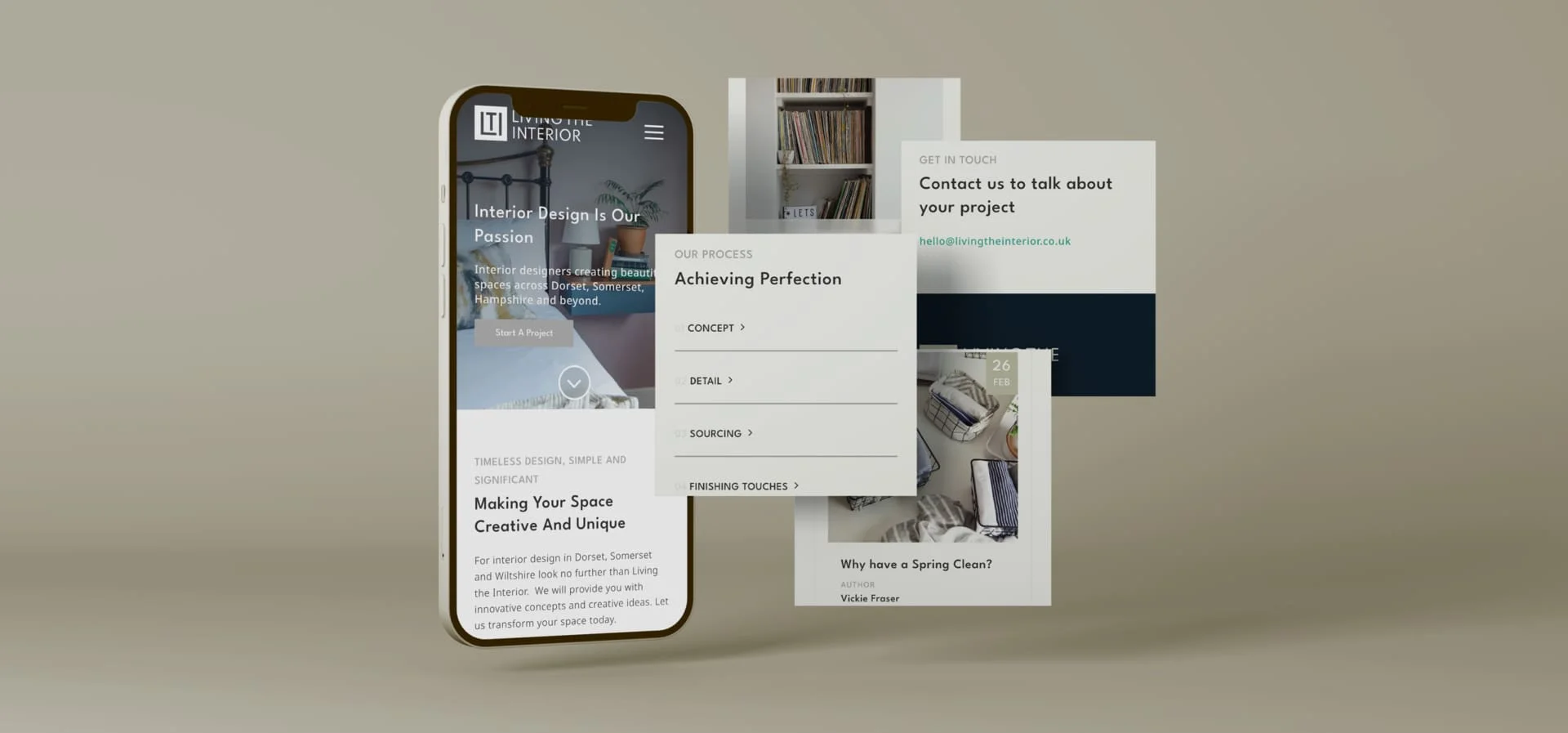Why web design matters
As we all know by now, your website is often the first point of contact between your business and potential customers. This means that having a well-designed website not only attracts visitors but also keeps them engaged, leading to higher conversion rates. As a web agency we understand that when it comes to web design, there’s a lot to consider. Whether you’re planning a complete overhaul or just a few tweaks, the process can feel overwhelming. So being the helpful people that we are, we’ve put together this simple guide to help you think about some key principles when your website is next up for a redesign.
A well-designed website not only attracts visitors but also keeps them engaged, leading to higher conversion rates.
1. Understanding the basics of web design
What is web design?
At its core, web design is about creating a website that not only looks good but also works well for your visitors. This involves everything from the layout and colour scheme to the typography and images you use. A well-designed website should be both attractive and easy to navigate, helping users find what they need quickly and effortlessly.
Key components of web design:
- Layout: How the content is arranged on the page, including headers, footers, and navigation menus.
- Colour Scheme: The set of colours used throughout your site to create a cohesive and appealing look.
- Typography: The choice of fonts and text styles that affect readability and overall design.
- Imagery: The photos, graphics, and videos that add visual interest and support your content.
2. Know your audience: Design with them in mind
Why audience matters:
One of the most important aspects of web design is understanding who your audience is. Your website should be tailored to the needs, preferences, and behaviours of the people you want to reach. Whether they’re tech-savvy professionals, casual browsers, or somewhere in between, your design choices should reflect what they’re looking for.
How to design for your audience:
- Research your users: Spend time understanding your audience’s demographics, interests, and pain points. Tools like surveys, analytics, and user testing can provide valuable insights.
- Create user personas: Develop fictional profiles representing your typical users. This helps you design with specific people in mind rather than a vague idea of “everyone.”
- Focus on user needs: Consider what your users are trying to accomplish on your site. Make sure your design guides them to their goals as easily as possible.
3. The Importance of User Experience (UX)
What is UX?
User experience (UX) is all about how a person feels when interacting with your website. A positive UX means that your site is easy to use, intuitive, and enjoyable to navigate. This doesn’t just make your users happy—it also helps your business by keeping visitors on your site longer and encouraging them to take action, whether that’s making a purchase, signing up for a newsletter, or contacting you for more information.
A positive UX means that your site is easy to use, intuitive, and enjoyable to navigate.
Best practices for UX design:
- Keep it simple: Avoid overwhelming your visitors with too much information or complicated navigation. Simple, clear design makes it easy for users to find what they’re looking for.
- Prioritise speed: No one likes a slow website. Ensure your site loads quickly to prevent users from leaving out of frustration.
- Mobile responsiveness: With more people browsing on their phones, it’s crucial that your site works well on all screen sizes.
- Accessibility: Make your site usable for everyone, including those with disabilities, by following web accessibility standards.
4. Align your design with your business goals
Why it’s important:
Your website isn’t just a digital brochure—it’s a critical tool for achieving your business goals. Whether you’re aiming to increase sales, generate leads, build brand awareness, or something else, your web design should support these objectives. A site that’s aligned with your goals will help guide users toward the actions you want them to take.
How to focus on business goals:
- Set clear objectives: Before you start designing (or redesigning), define what you want to achieve with your website. Are you looking to increase online sales? Grow your email list? These goals will shape your design decisions.
- Create a clear call to action: Every page on your site should guide users to take a specific action that supports your business goals, whether that’s filling out a contact form, signing up for a demo, or making a purchase.
- Measure and adjust: Use analytics to track how well your website is meeting your goals. If something isn’t working, don’t be afraid to make adjustments to improve performance.
5. Visual design: Making a lasting impression
Why visual design matters:
First impressions matter, and your website’s visual design plays a huge role in how people perceive your brand. A well-designed site can communicate professionalism, trustworthiness, and creativity—all within a few seconds of someone landing on your homepage. Beyond just looking good, your visual design should also reinforce your brand identity and make it easy for users to engage with your content.
Your visual design should also reinforce your brand identity.
Visual design tips:
- Consistency is key: Ensure that your colour palette, typography, and imagery are consistent throughout your site to create a cohesive brand experience.
- Use white space effectively: Don’t be afraid to leave some areas of your site empty. White space helps to reduce clutter and makes your content easier to read.
- Choose high-quality imagery: Use high-resolution images and avoid generic stock photos to create a more authentic and engaging experience.
6. Bringing it all together
Web design is about more than just making a website look good—it’s about creating a functional, user-friendly experience that aligns with your business goals and resonates with your audience. By focusing on these key principles, you can build a website that not only attracts visitors but also keeps them engaged and converts them into loyal customers.


